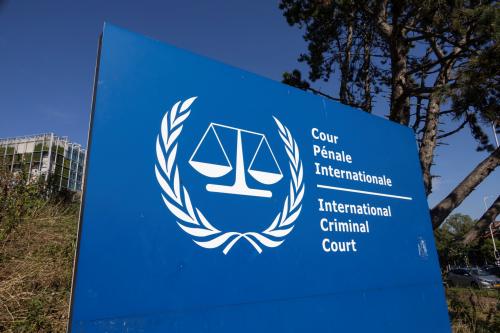

9:00 am EDT - 1:45 pm EDT
Past Event
This seminar was the second in a series of three seminars on the protection of civilians. The first seminar’s (September 14, 2010) event page can be viewed by
clicking here
and the third seminar is scheduled to take place on January 13, 2011.
This seminar on the protection of civilians focused on the ways in which communities protect themselves. Elizabeth Ferris of the Brookings Institution and Lawrence Woocher of the US Institute of Peace introduced the session, noting the importance of analyzing community self-protection strategies for both humanitarian action and conflict-prevention. Casey Barrs of the Cuny Center began the program with introductory remarks on the conceptual framework, which was followed by presentations of case studies on the Democratic Republic of Congo, Burma/Myanmar, and Colombia by Mike Jobbins, Nils Carstensen, and Gimena Sánchez, respectively.
Amidst these rich presentations, some 25 participants from the United Nations, international humanitarian and development organizations, non-governmental humanitarian and human rights organizations, agencies of the US government and the diplomatic community explored strategies that local communities use to protect themselves from violence, and the role of international actors in supporting community-led protection efforts. Meeting under Chatham House rules, the participants did not attempt to reach consensus, rather, they unpacked complexities and contradictions associated with community self-protection. This report provides a brief account of the presentations and sets out the main themes that emerged from the discussion. In doing so, the report aims to highlight areas for subsequent debate and action.
Conceptual Framework and Inventory of Community Self-Protection Measures
Reflecting on the magnitude of civilian deaths that have occurred due to internal conflicts over the last 15 years and remarking on the inevitability of mass violence in the future, Casey Barrs questioned the capacity of the international protection apparatus to “protect” civilians. Noting that participants in the first seminar had identified local communities as the first actors for protection, Barrs commented on the need to overcome the paternalistic approach toward victims held by various actors. According to Barrs, ‘actors waste precious time wrangling over the definition of protection; when locals take steps to protect themselves, they are defining protection for us.’ Although some actors ‘appreciate’ civilians’ remarkable capacity for self-preservation, and identify the ‘critical importance of civilian self-protection,’ Barrs said that there have been ‘limited or ad-hoc attempts to inventory civilian self-protection tactics and strategies and to support them.’
‘Community groups undertake deliberate, planned, life-saving practices’ which need to be ‘understood and shared so that the learning curve for survival can be shortened’ said Barrs. To this end, Barrs proceeded to discuss a preliminary, non-exhaustive, non-prescriptive inventory of conventional and less conventional tactics and strategies that are (or could be) utilized by civilians for their own protection and could be supported by external actors.[1] Barrs has compiled a preliminary inventory of some 300 actions for community self-protection; the use of specific strategies depends on the particular context.
Download seminar report » (PDF)
Download participant list » (PDF)
[1] See Casey A. Barrs, How Civilians Survive Violence: A Preliminary Inventory, The Cuny Center, October 2010 and Casey A. Barrs, Preparedness Support: How to Brace Beneficiaries, Local Staff and Partners for Violence, The Cuny Center, November 2009.

George Ingram, Anthony F. Pipa
July 10, 2025

Kelebogile Zvobgo
July 9, 2025

William A. Galston
July 2, 2025